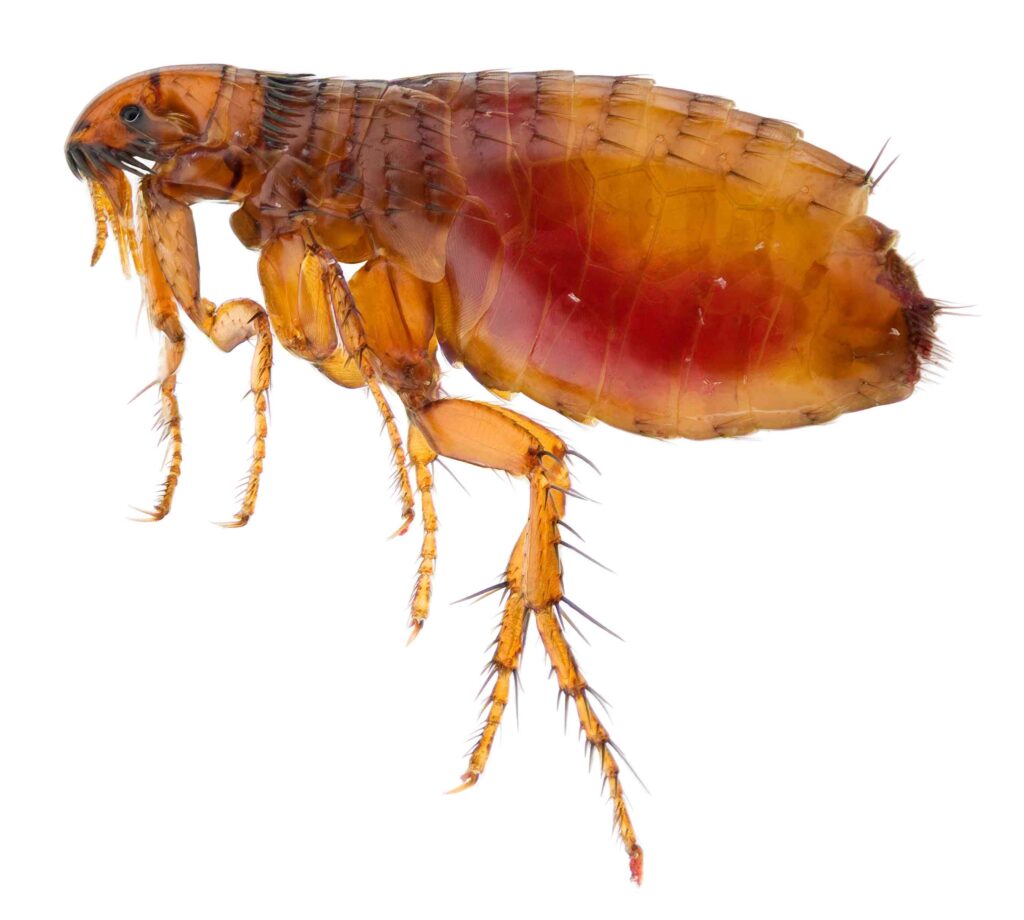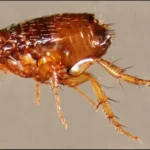Fleas are small, parasitic insects that have earned a reputation for their ability to cause irritation in both animals and humans. Despite their size, these tiny creatures have an impressive set of adaptations that allow them to survive in a variety of environments, often at the expense of their hosts. But what exactly is a flea, and why is it so well-known for its parasitic nature? In this article, we will explore the fascinating world of fleas, their characteristics, life cycle, and the impact they have on animals and humans.
What Are Fleas?
Fleas are small, wingless insects that belong to the order Siphonaptera. The name “Siphonaptera” derives from Greek words meaning “tube” and “without wings,” a fitting description of their tubular mouthparts used for feeding on blood, and their lack of wings. Though tiny—usually measuring between 1.5 to 3.3 mm in length—fleas are known for their remarkable ability to jump several times their body length, making them one of the most agile creatures in the insect world.
Fleas are external parasites, which means they live on the outside of their hosts (often mammals and birds) and feed on their blood. They are equipped with specialized mouthparts for piercing skin and extracting blood, which serves as their primary source of nutrition. While fleas can infest a wide range of animals, they are most commonly found on pets such as cats, dogs, and rabbits.
The Life Cycle of a Flea
Fleas undergo a complete metamorphosis, which means they pass through four distinct stages in their life cycle: egg, larva, pupa, and adult. The process can take anywhere from a few weeks to several months, depending on environmental conditions.
- Egg: Flea eggs are tiny, oval, and white. After a female flea feeds on a host, she lays her eggs in the host’s fur. These eggs are not sticky and fall off easily onto the host’s environment, such as carpets, bedding, or floors.
- Larva: The flea larvae are small, worm-like creatures that feed on organic debris, such as flea feces (which consist of undigested blood), skin flakes, and other detritus found in the environment. Larvae are typically found in dark, hidden areas like cracks in the floor or the fur of their host.
- Pupa: After the larval stage, the flea enters the pupa stage, where it forms a protective cocoon. Inside the cocoon, the pupa develops into an adult flea. The cocoon is resistant to environmental conditions, making it difficult for pesticides to penetrate. The pupa may remain dormant until the right conditions (like the presence of a host) trigger its emergence.
- Adult: The adult flea is the familiar bloodsucker that jumps from host to host. Fleas typically emerge from their cocoons when they sense vibrations, heat, or carbon dioxide, which signal the presence of a potential host. Once they find a host, they latch onto its skin, begin feeding, and start the reproductive cycle.
Flea Bites and Health Risks
Flea bites are perhaps the most well-known aspect of flea infestations. When a flea feeds, it pierces the skin of its host with its specialized mouthparts, injecting saliva that contains anticoagulants to prevent blood from clotting. This can lead to itching, irritation, and inflammation at the bite site. In some cases, flea bites can cause allergic reactions, resulting in severe itching and discomfort.
Beyond the immediate discomfort caused by flea bites, fleas can transmit several diseases. Historically, fleas were responsible for spreading the plague, caused by the bacterium Yersinia pestis. During the 14th century, fleas that lived on rats spread the plague to humans, causing one of the deadliest pandemics in history. Although the risk of plague transmission is much lower today, fleas can still transmit other diseases, such as typhus and flea-borne parasitic infections like tapeworms.
Fleas are also a significant cause of concern for pets, particularly in animals with heavy infestations. In severe cases, fleas can lead to anemia (due to blood loss), skin infections, and more. Flea infestations in pets can also cause secondary problems like flea allergy dermatitis (FAD), an allergic reaction to flea saliva.
How to Prevent and Treat Flea Infestations
Managing and preventing flea infestations involves several key steps:
- Regular Grooming and Inspection: Regularly grooming pets and inspecting them for signs of fleas, such as excessive scratching, hair loss, or the presence of flea dirt (tiny black specks) in their fur, is essential. Early detection helps prevent the spread of fleas.
- Flea Treatments: There are many treatments available for flea control, including oral medications, topical treatments, flea collars, and shampoos. These products can kill adult fleas and break the flea life cycle by targeting eggs and larvae.
- Cleaning and Vacuuming: Fleas can live in the environment, not just on pets. Thoroughly cleaning and vacuuming your home—particularly carpets, bedding, and furniture—can help remove flea eggs, larvae, and adults. Be sure to dispose of the vacuum bag immediately to prevent re-infestation.
- Environmental Treatment: If a flea infestation is particularly severe, you may need to treat your home with flea sprays or powders designed to kill fleas at all stages of life. Pet-safe insecticides can also help reduce flea populations in areas where pets spend time.
- Consult a Veterinarian: If you are unsure about how to treat or prevent a flea infestation, consulting with a veterinarian is always a good idea. They can recommend the best flea control products for your pet and provide guidance on how to manage the infestation.

Conclusion
In conclusion, fleas are more than just a nuisance—they are highly specialized, parasitic insects with a remarkable ability to infest and thrive on a variety of hosts. From their tiny, agile bodies to their complex life cycle, fleas are fascinating creatures that play an important role in the ecosystem, albeit often as pests. Understanding their behavior, the potential risks they pose, and how to control and prevent infestations is key to protecting both your pets and your home from the discomfort and health risks associated with these persistent parasites.



